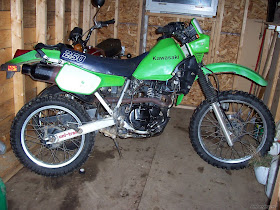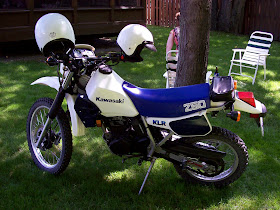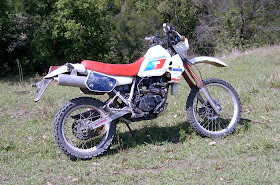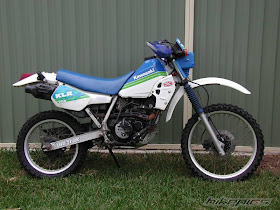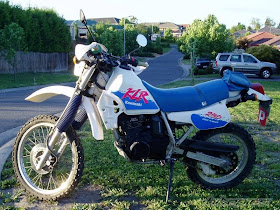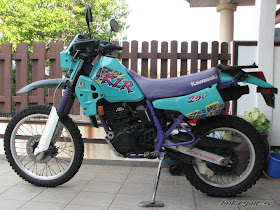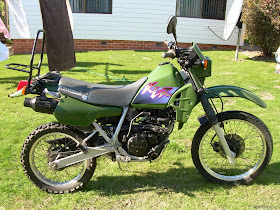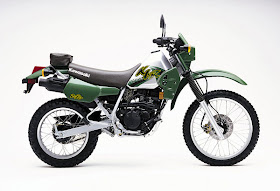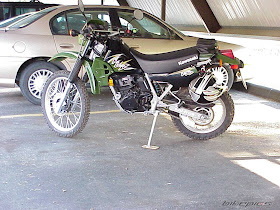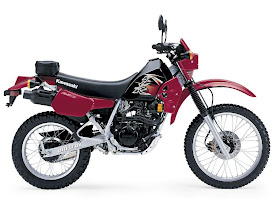One of the most important items that need to be maintained the KLR250, or any motorcycle for that matter, is the drive chain. Failure to clean, lubricate, and adjust the chain at regular intervals can result in premature wear of the chain and sprockets. A worn or misadjusted drive chain can break or slip off the sprockets causing the rear wheel to lock up sending the bike out of control. In this article we're going to look at the basics of adjusting the chain of your KLR250.

To the left is a diagram that shows the chain and sprockets. The part in the middle is the swingarm, which is what the rear wheel is attached to. On the front part of the swingarm there is a plastic chain guard that is held on with one bolt. That bolt is where you'll check for slack in the chain which will tell you whether it is adjusted properly or not.
Items Needed:-Ft/lb torque wrench
-New cotter pin
-Basic hand tools
According to the Kawasaki KLR250 owners manual the correct way to check for proper chain slack begins with placing the bike on its side stand without a driver/passenger on the bike. Because the chain can wear unevenly you should try rotating the rear wheel (WARNING: Watch your fingers by the chain!) until you come to the part where the chain slack is tightest. Then to check for proper slack locate the swingarm guard bolt and directly under it pull the chain up toward the swingarm. The space between the chain and the swingarm should be between 0-5mm or 0-0.2" Check the diagram above for more clarity.

If the chain is adjusted properly then you're all set, though don't forget to clean and lubricate the chain. If not then its time to make some adjustments. Adjusting the chain is a fairly straight forward process. The rear wheel is held to the swingarm by a long axle with a large nut at the end. That nut is secured in place with a cotter pin. Using a pair of pliers remove the cotter pin and loosen the nut until you can just barely move the adjusters on the axle. (see picture) If you take a close look at the adjusters you'll see that they have numbers on them. The higher numbers represent a tighter chain, lower numbers represent a looser chain. All you have to do is turn those adjusters until you see that the chain adjustment is correct, being sure that the adjusters on both sides are on the same number in relation to the metal pin they press against. Failure to make sure both adjusters are in the same position will result in the chain derailing.
Once you've gotten the chain adjusted correctly all that is left to finish up this project is to tighten the axle nut to 69 ft/lbs with a torque wrench and insert a new cotter pin. Before installing the new cotter pin its best to check the chain slack one last time and you're good to go! FYI: Kawasaki recommends checking chain slack every 600 miles.
Note: Eagle eye visitors have pointed out that my adjusters are on upside down. This is the way they were when I purchased the bike. When checking my rear bearings I decided to change them back to the stock setup and found that it was much harder to keep the adjusters in place while tightening the axle nut so I changed them back to this configuration. I can only assume that is why the previous owner set them this way. It works for me so...
